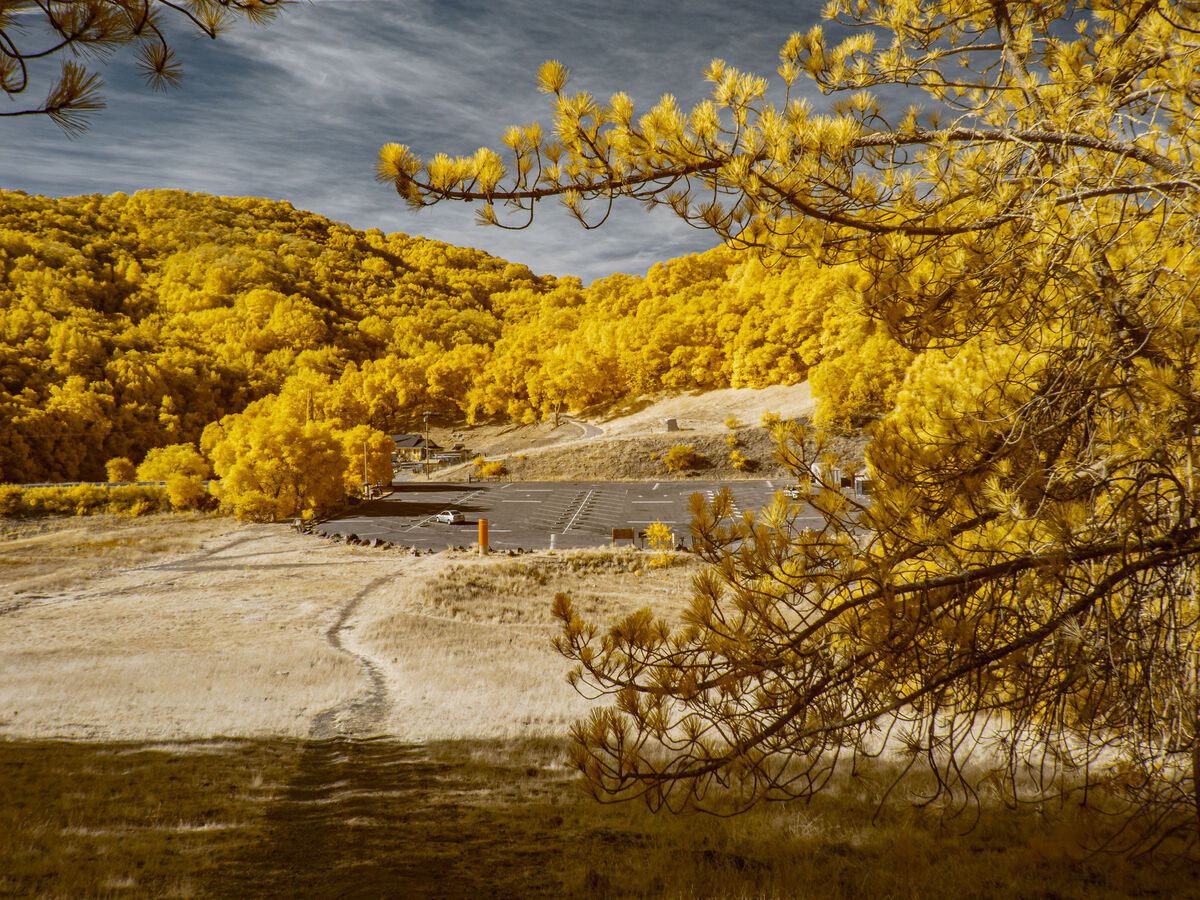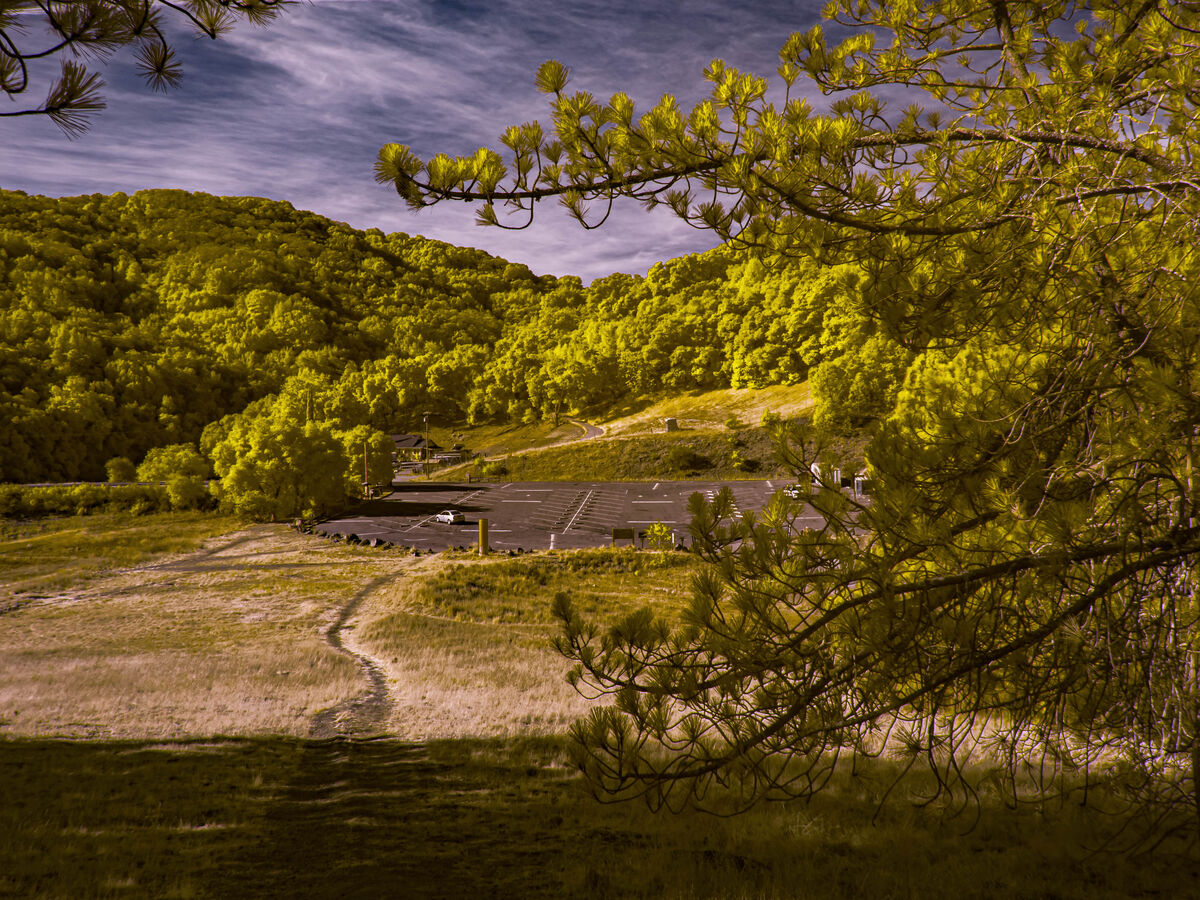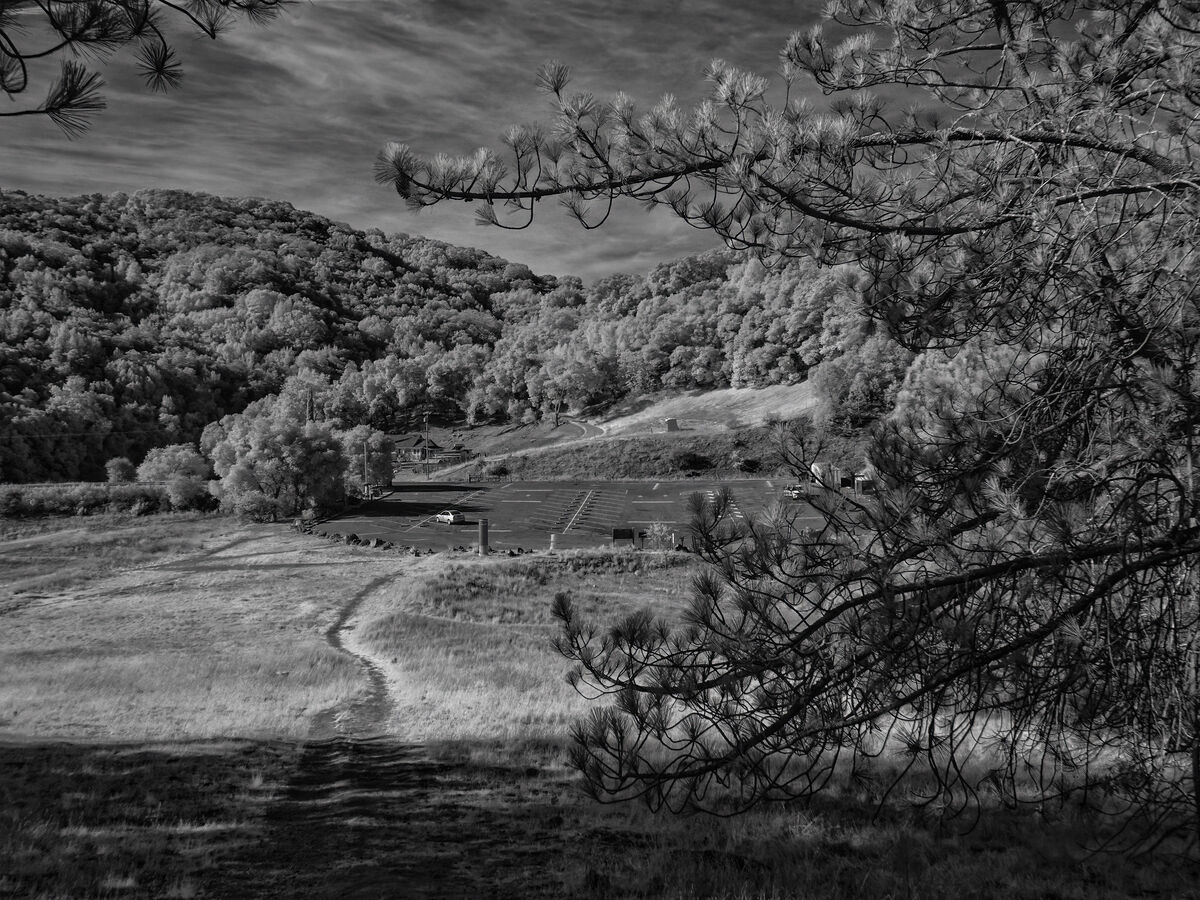B&W from 590nm filter
Feb 18, 2023 00:29:37 #
One thing I have seen in using various filters for B&W with a full spectrum modified camera is that the ones taken at the 830nm end seem to be some what harsh looking. And those using 590nm tend to turn out with a richer gray scale and I find them more soothing to look at. My process with these is to shoot RAW, and do a red-blue channel swap. After the channel swap, I go trying different spots on the resultant image for WB and pick one that I feel will provide the best gray tones. And for the conversion to B&W, I often use NIK's Silver Efex Pro and I really like a profile called WetRocks.
As for an example, the first image is after the red-blue swap and some minor adjustments to bring out the yellow.
Second image is taking the 1st image and trying different spots for White Balance looking for what I feel will produce the best gray scale I can get from the image.
And 3rd image is the conversion to B&W using NIK's Silver Efex Pro, WetRocks Profile. Sometimes I have to follow this with Topaz's Denoise AI as the WetRocks can stretch the image such that noise may become more visible. And this one did need Denoise AI.
Image was taken using an Olympus EM5ii with the kit lens 14-42mm f3.5-5.5 II. I like using it because the camera/lens is small and lightweight, and I find this lens has no problems with hotspots. For example, I do have the Olympus 12-40mm f2.8, and it does have a bit of a hotspot problem, so I don't use it for IR. I have other Olympus lenses that I have not gotten around to trying since the 14-42mm lens seems perfect to me for IR.
One thing about IR photography is that using the latest, greatest camera models and lenses that have just been released is really not necessary. IR photography is best when the sun is high, and a fast lens is just not something that is needed. Nor is high shutter speeds and top of the line image stabilization. Just one important thing to me is to use mirrorless rather than DSLR. I do have a Sony 55 converted, which is a SLT, but it has the same disadvantage as a DSLR and autofocus is just not accurate meaning that I have to manually focus. With mirrorless, focus is spot on, every time. The A55 just sits at home, while the mirrorless Olympus EM5ii is the camera chosen each time I go out to do IR. Of course, if I take along a friend who doesn't have their own IR modified camera, the A55 might come out of hibernation.
As for an example, the first image is after the red-blue swap and some minor adjustments to bring out the yellow.
Second image is taking the 1st image and trying different spots for White Balance looking for what I feel will produce the best gray scale I can get from the image.
And 3rd image is the conversion to B&W using NIK's Silver Efex Pro, WetRocks Profile. Sometimes I have to follow this with Topaz's Denoise AI as the WetRocks can stretch the image such that noise may become more visible. And this one did need Denoise AI.
Image was taken using an Olympus EM5ii with the kit lens 14-42mm f3.5-5.5 II. I like using it because the camera/lens is small and lightweight, and I find this lens has no problems with hotspots. For example, I do have the Olympus 12-40mm f2.8, and it does have a bit of a hotspot problem, so I don't use it for IR. I have other Olympus lenses that I have not gotten around to trying since the 14-42mm lens seems perfect to me for IR.
One thing about IR photography is that using the latest, greatest camera models and lenses that have just been released is really not necessary. IR photography is best when the sun is high, and a fast lens is just not something that is needed. Nor is high shutter speeds and top of the line image stabilization. Just one important thing to me is to use mirrorless rather than DSLR. I do have a Sony 55 converted, which is a SLT, but it has the same disadvantage as a DSLR and autofocus is just not accurate meaning that I have to manually focus. With mirrorless, focus is spot on, every time. The A55 just sits at home, while the mirrorless Olympus EM5ii is the camera chosen each time I go out to do IR. Of course, if I take along a friend who doesn't have their own IR modified camera, the A55 might come out of hibernation.
After Red-Blue Channel Swap

(Download)
After finding a White Balance that I think will produce the B&W look I am after

(Download)
After Silver Efex Pro, WetRocks Profile plus Denoise AI

(Download)
Feb 19, 2023 06:34:21 #
Feb 19, 2023 22:22:48 #
Feb 21, 2023 15:03:15 #
Jan 12, 2024 09:38:11 #
JimH123 wrote:
One thing I have seen in using various filters for... (show quote)
Utterly spectacular photography 💛💛🌞💛💛
If you want to reply, then register here. Registration is free and your account is created instantly, so you can post right away.



